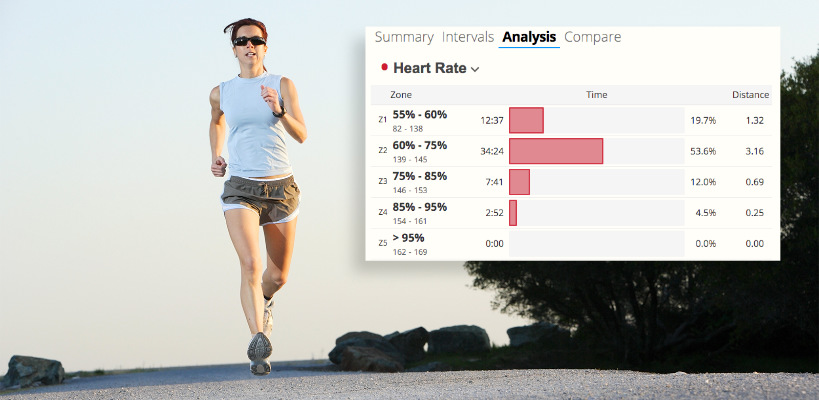Why Easy Runs Are Hard
Easy runs are important, but it takes work to keep them easy
As complicated as training sometimes gets, the basic formula for improvement is simple: stress, recovery, adaptation, repeat. You stress the body with a specific workout, you recover from the stress with either active recovery, such as an easy run, or a rest day. The rest lets your body heal, adapt and make itself stronger, and then you repeat the process with another specific workout. The most common step that people screw up are the rest and recovery days. Failing any of the steps makes the entire system fall down, resulting in disappointing performance plateaus and increased likelihood of injury.
They're called "rest days" for a reason
How do you avoid messing up rest days? The answer is simple, but the realities of everyday life complicate it. When you have a rest day on your training calendar, you need to make sure it's an actual restful day. Pressure at your job, demanding family obligations, poor sleep and travel can destroy the healing and adaptive benefits of rest days. Another problem is that people love fitness so much that they do intense cross-training on rest days — again destroying any positive effects the time was supposed to provide.
The hard work of easy runs
If you have the discipline required to take rest days seriously, there's another major hurdle in your path. When your plan calls for an easy run, or an interval run with easy warmup distance, recoveries, and an easy cooldown, you need to make sure the easy sections don't creep above zone 2.

Easy runs help build endurance, but they also let your body continue to recover from hard workouts. The healing properties of easy runs are either greatly diminished or nonexistent in zone 3 and above, and unfortunately, it's quite difficult to sense the difference between these zones if you're not tracking and monitoring in real-time. Simply put: zone 3 feels like zone 2.
Why is this the case? Runners typically enjoy running. When a training plan calls for 6 easy miles, the runner happily heads out the door and gets a nice, easy pace going. The fresh air feels good, and the idea that it's an easy workout has a relaxing effect. The runner is in their happy place and they naturally gravitate toward medium-speed paces. Why? Because it's the pace that feels the nicest. And even though it seems easy, the intensity is sabotaging their entire training cycle.
Heart rate and run power to the rescue!
We constantly hear people singing the joys of running without a watch on social media, and you know what? We think it's great! Anything that motivates people to run, train, and lead a healthy lifestyle is wonderful. But, if your goal is to get faster, beat your own PRs, and be competitive at races on the podium or in your age group—while making injury avoidance a top priority—then you need to take easy runs seriously, and a GPS watch is a must-have accessory.
Even if you're a deeply experienced runner who believes they can stay below zone 3 completely by feel, it's worth experimenting with a GPS watch to validate it. The slightest bit of elevation or headwind makes a big impact on your effort level, and if you're not a super fast runner, remaining in zone 2 can quickly become an act of trying to run as slowly and lightly as possible without breaking into a walk.
...the basic formula for improvement is simple: stress, recovery, adaptation, repeat.
Running with a heart-rate monitor is strongly recommended for tracking easy runs. Heart rate is considered by some to be inferior as it's influenced by diet, sleep, and other factors. But when it comes to easy runs, the feedback an accurate heart-rate monitor provides is valuable for the act of staying in the low zones.
If you have access to a running power meter and you've dedicated the time and attention required to get familiar with run-power data, then this is another excellent tool for monitoring easy runs. Running power meters have the advantage of providing faster feedback. When you make an adjustment to your stride in order to lower your intensity, you will see the results of the change much quicker than you will see your heart rate ramp downward.
If you're running on a flat course without much wind, you can also use pace zones to limit your intensity, if you don't have access to a heart-rate monitor or running power meter. But keep in mind that changes in elevation and wind can quickly make pace zones difficult to follow.
Use structured workouts with targeted zones
SportTracks makes it easy to create custom structured workouts that you can execute on your watch. In just a few clicks, you can create an easy run workout with the goal of staying in zone 2 of your running heart-rate. You can quickly export this workout as an .FIT file to load into a watch, and if you have a Garmin, a handy calendar integration will send this workout directly to your watch automatically.

When you do this workout, your watch will beep and vibrate to let you know when you're in your targeted zone, and when you have exceeded it and need to slow down. There are likely people out there who would find this beeping an chirping from their wrist annoying, but personally, I enjoy it. I find it makes the sport of running a bit more like a game that I need to focus on to improve. But ultimately, the real reward is avoiding the burnout and overtraining that can consume you if you're not working hard to keep easy runs easy.
| Article written by Sam Mallery, Director of Marketing, Zone Five Software Inc. |
